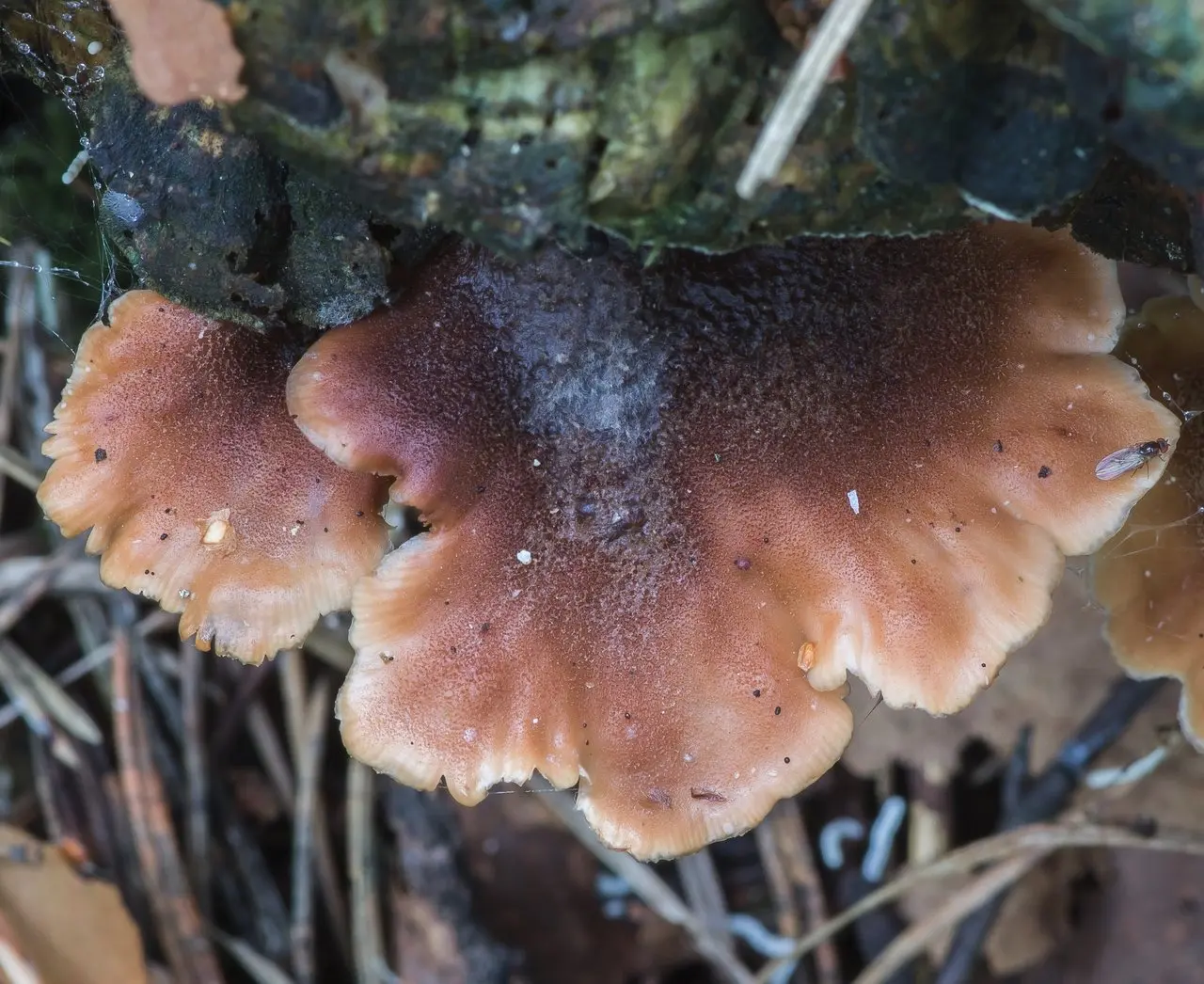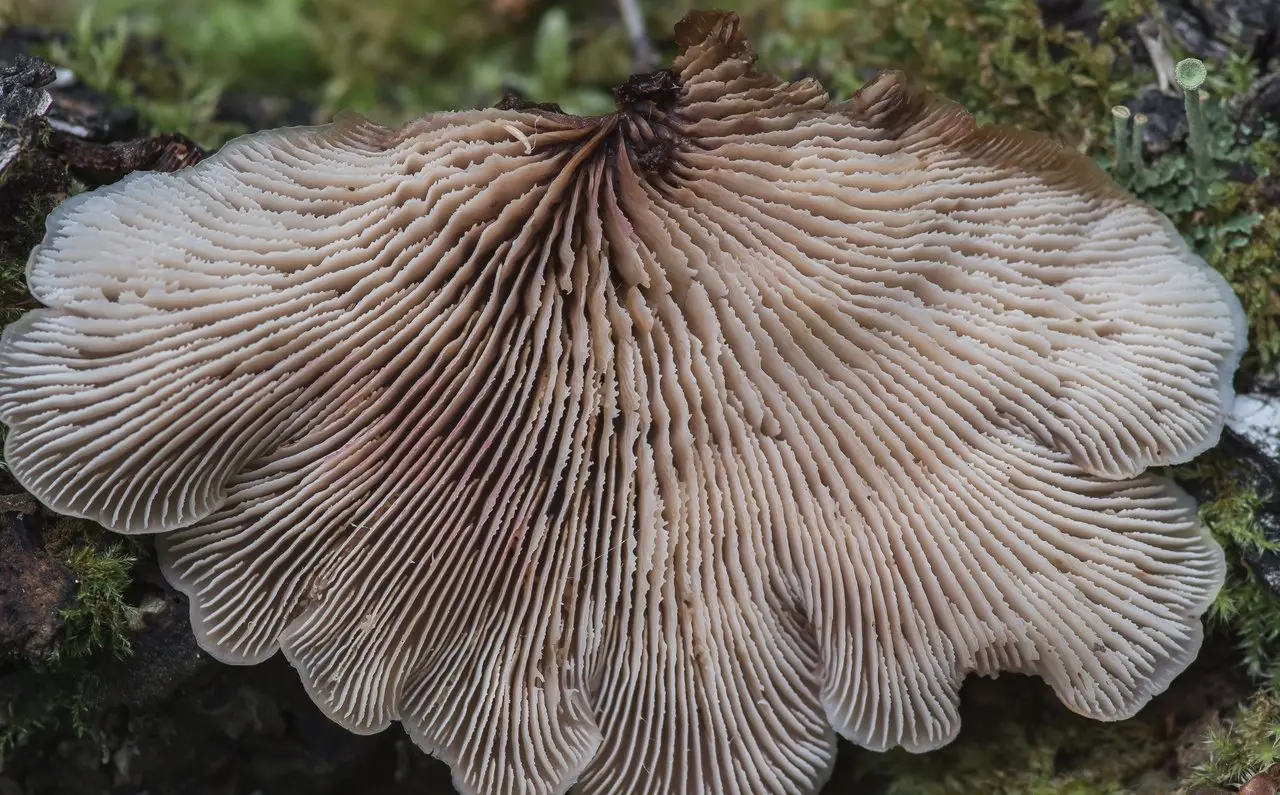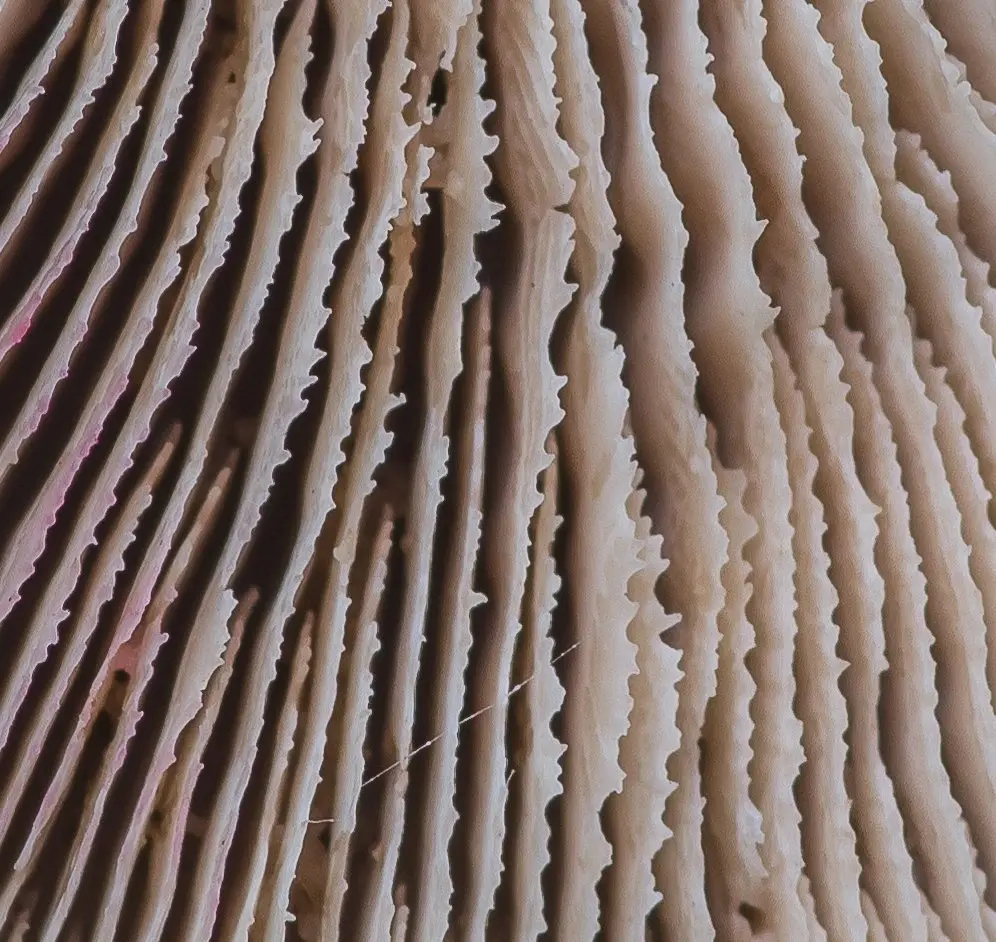Bear sawfly (Lentinellus ursinus)
- Division: Basidiomycota (Basidiomycetes)
- Subdivision: Agaricomycotina (Agaricomycetes)
- Class: Agaricomycetes (Agaricomycetes)
- Subclass: Incertae sedis (of uncertain position)
- Order: Russulales (Russulovye)
- Family: Auriscalpiaceae (Auriscalpiaceae)
- Genus: Lentinellus (Lentinellus)
- Type: Lentinellus ursinus (Bear sawfly)
:
- Bear sawfly
- Agaric bear
- Lentinus Ursinus
- Hemicybe ursina
- pocillaria ursina
- Recumbent bear
- Panel bear
- Pocillaria pelliculosa

Michael Kuo
The main issue of identification is the difference between Lentinellus ursinus (bear sawfly) and Lentinellus vulpinus (wolf sawfly). Theoretically, Lentinellus vulpinus is distinguished, in particular, by the presence of a foot, but its foot is rudimentary, it may not be noticed, in addition, it may be completely absent. An attentive mushroom picker can see differences between the two species in colors (in particular, the surface of the cap and its margin), but these features overlap, and mushrooms show considerable variability even during development. Summary: It is extremely difficult to distinguish between these species without a microscope.

head: up to 10 cm in diameter, reniform to conditionally semicircular. Convex when young, becoming flat or depressed with age. Slightly pubescent or velvety, over the entire surface or more abundantly at the base, about a third. The edge is whitish, later darkens. The edge is sharp, when dried, wrapped. The color is brown, paler towards the edge, when dried, cinnamon brown, may acquire wine-red hues.
plates: White to pinkish, darken and brittle with age. Frequent, thin, with a characteristic serrated edge.

Leg: missing.
Pulp: light, light cream, darker with age. Rigid.
Taste: Highly pungent or peppery, some sources indicate bitterness.
Smell: odorless or slightly pronounced. Some sources describe the smell as “spicy” or “unpleasant, sour”. In any case, different sources agree on one thing: the smell is unpleasant.
spore powder: white, creamy white.
Bear sawfly is considered inedible due to its bitter, pungent taste. There is no data on toxicity.
Saprophyte, grows on hardwood and rarely on conifers. Widely distributed in North America, Europe, throughout Our Country. Fruiting from late summer to mid-autumn.
An inexperienced mushroom picker can mistake a bear’s sawfly for an oyster mushroom.
The wolf sawfly (Lentinellus vulpinus) is very similar in appearance, distinguished by the presence of a short, rudimentary eccentric stalk, under the microscope, the absence of an amyloid reaction on the hyphae of the pulp and, on average, larger spores.
Beaver sawfly (Lentinellus castoreus) – also similar in appearance, on average with larger fruiting bodies, the surface at the base without pubescence, grows mainly on coniferous substrates.
* Translator’s note.
Photo: Alexander.









